Great British pubs are hard to beat and something loved by the majority of the British nation. In 2019, over 8 billion pints were sold in Britain, which just shows the love that Brits have for a good pint. Although times and traditions have changed and evolved, a pub, or public house in its full form, is still considered the best place to get a pint in Britain, and the UK, and rightly so.
The term public house was first believed to have appeared in the 17th century. It was used to differentiate a private house from a public house, literally a house that was open to the public. It wasn’t until the 19th century that public houses started to look like what we now consider a pub, and became a focal point for communities and meetings. Although many Brits have a clear idea of what British pubs should be and look like, the term ‘pub’ is not a protected term and is open for debate as to what fits into it.
Despite British pubs declining in numbers over recent years, due to a variety of reasons, pubs still play an important role in British culture. In many small villages across the country, pubs provide a space for communities to meet, events to happen and even small local shops to operate. Pubs are at the heart of British communities and serve as places for friends to gather, people to relax and unwind and stories to be told. That’s why we want to explore British pub culture and give anyone who is visiting Britain, or new to it, a guide to British pubs and what makes them so imperative to the British people.
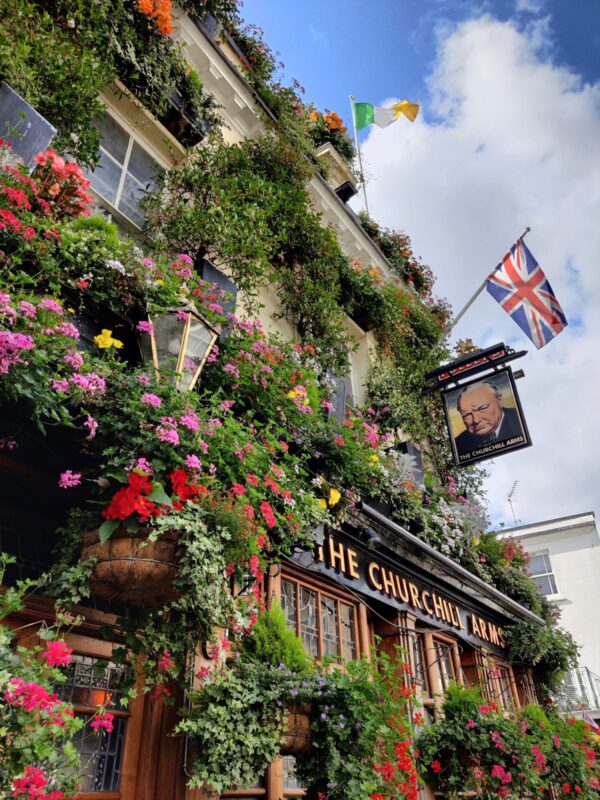
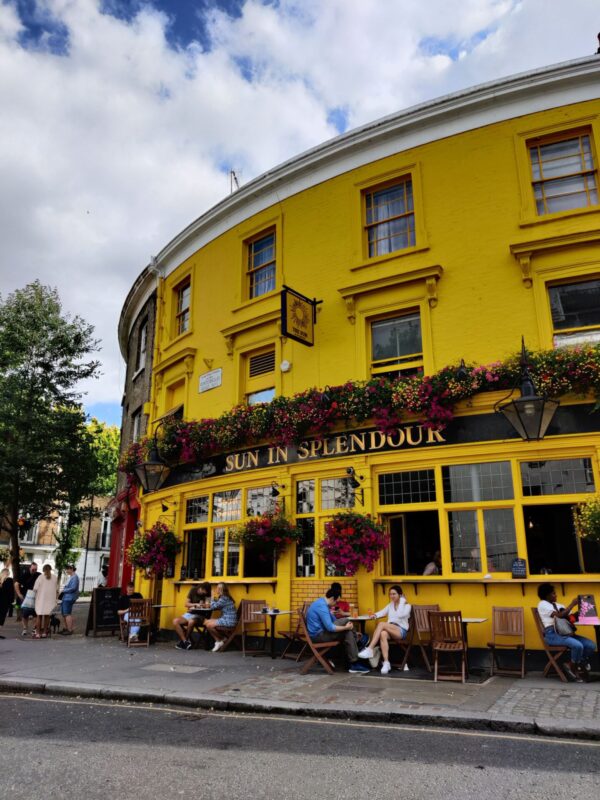
What To Drink In British Pubs
Pubs are probably most well known for beer and it’s hard to call somewhere a pub if it doesn’t serve draught beer. Generally, all British pubs serve a selection of beers which include lager, ales, stouts, pale ales and bitter. These can be a real variety, a selection of craft lagers and ales or a selection that comes mostly from a particular brewery, all that depends on the pub you’re in. There is also usually a selection of bottled beers, if that’s more your thing. In Britain, beers are served in pints and half-pints, a pint measures 568 ml.
Beer isn’t the only choice though, there’s usually a selection of wines, spirits, soft drinks, ciders and teas and coffees too. Some pubs offer a wide selection of these and some are more limited, some even offer cocktails. Wines are usually served in either 125ml, 175ml or 250ml measures, or the bottle. A single shot of a spirit in Britain is 25ml.
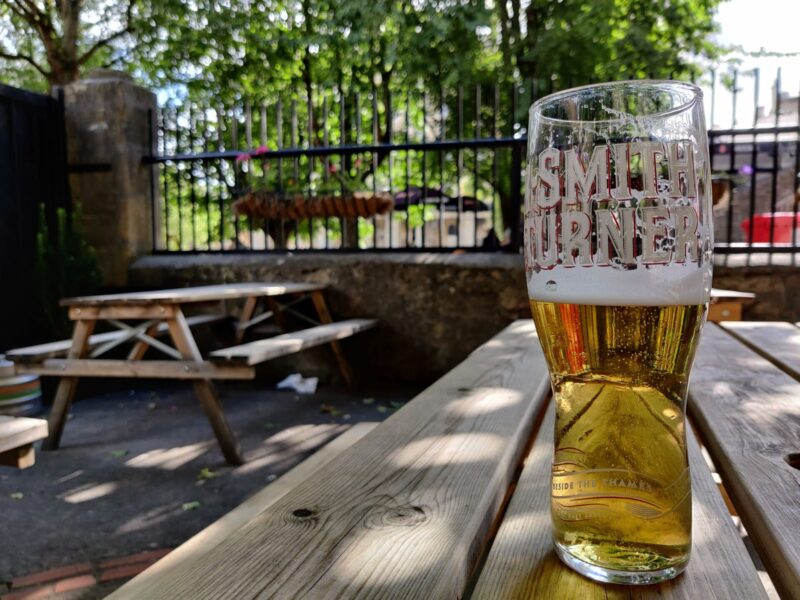
Traditional British Pub Food
Not all British pubs serve food, but many do nowadays. Even if they don’t serve food, most pubs offer bar snacks, at the least usually packets of nuts, crisps and pork scratchings. Some go further and offer pork pies, sausage rolls, scotch eggs or get more creative with olives and cheese.
The type of food on offer really depends on what pub you’re in but traditional British pubs are likely to offer some of the following, which are all considered traditional pub grub:
- Steak and ale pie – tender chunks of slow cooked steak in a rich gravy made with ale in shortcrust pastry. Usually served with mash or chips
- Fish and chips – light and crispy beer battered cod or haddock served with chips and tartar sauce, and often a side of mushy peas
- Ploughman’s – a cold lunch meal or platter consisting of bread, cheese and onions. Usually served with pickles, ham and sometimes an egg
- Sausage and mash – British sausages of any variety served with creamy, fluffy mash potato and a rich, delicious gravy
- Steak and chips – a staple on most menu’s, there is usually a few steaks to choose from which are served with chips and a sauce
- Chicken curry – usually a chicken tikka masala, which is a mild Indian style curry with chunks of chicken, served with rice, but options vary
- Ham, egg and chips – literally as it says this dish is a thick, grilled piece of ham with chips and fried egg
- Roast dinner – this can vary quite a lot but a roast dinner is usually turkey, beef or pork with roast potatoes, gravy and vegetables
- Fish pie – commonly salmon and smoked haddock in a white creamy sauce covered with creamy mash potato and grilled
- Burger – the type of burger varies but is commonly a beef burger with various other toppings, served with chips
Gastropubs, which we cover In more detail on types of pubs, tend to serve a wider choice of food and can specialise in higher-end food or a specific type of cuisine.

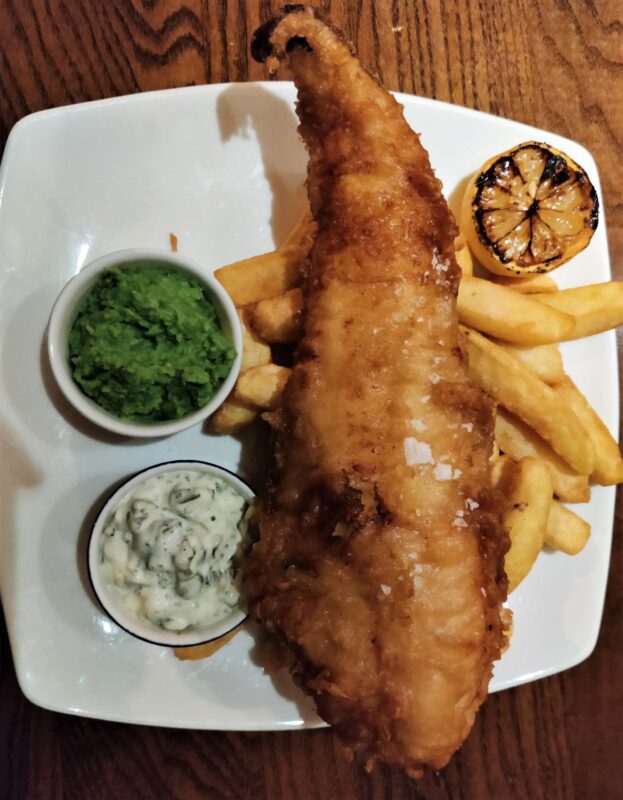
British Pub Etiquette
Pubs are generally a place to meet new people, meet old friends, unwind and relax and eat and drink. As such, there aren’t too many rules to the British pub culture. However, there are a few things you should know and keep in mind.
The number one thing to know is that generally you always order at the bar. There is no table service in pubs (although you may occasionally get table service in a specific restaurant section of a gastropub). Either order at the bar as you go in and then find a table or if there’s more than just one of you, find a table and then one of you go to the bar.

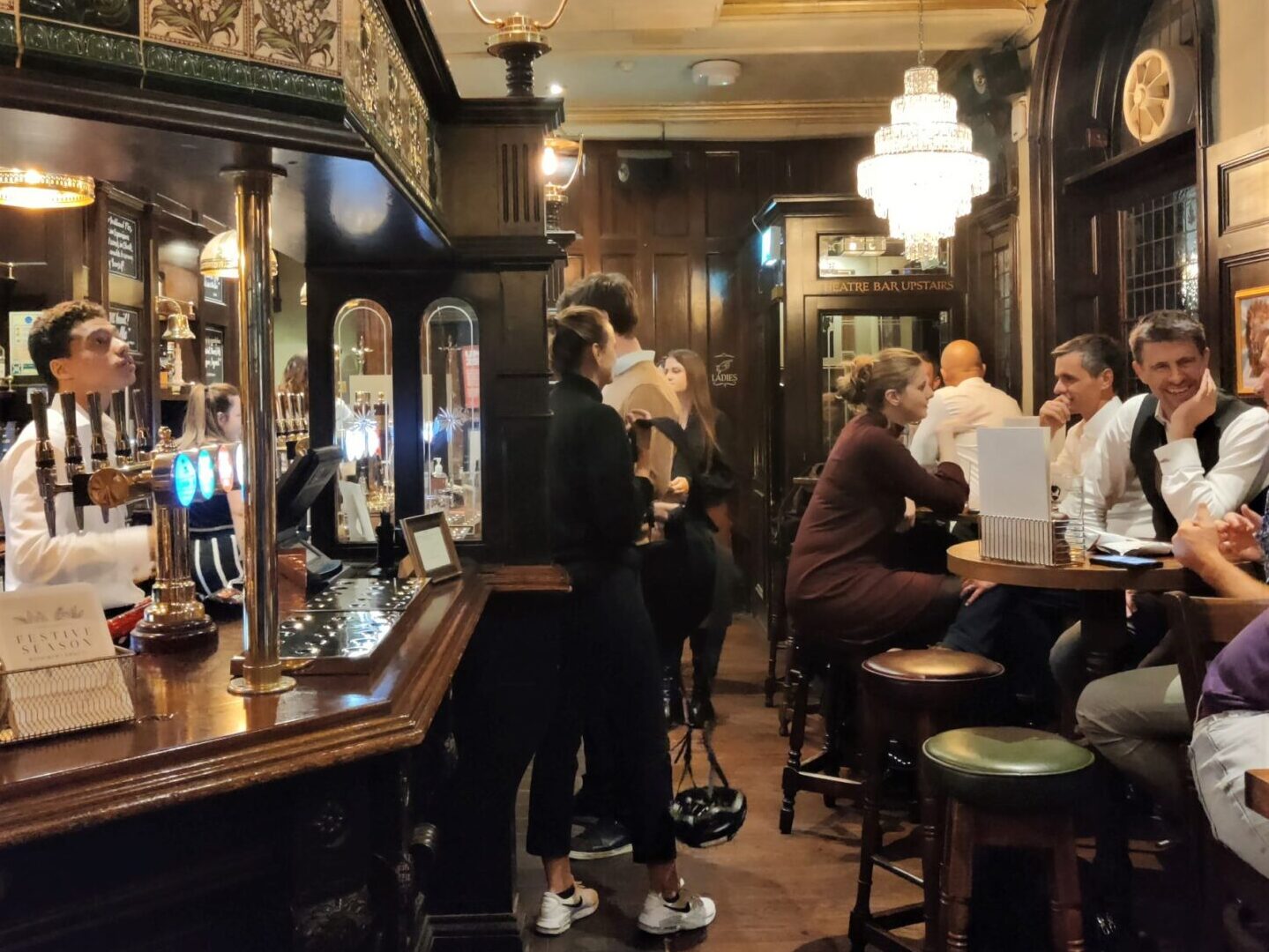
However, the coronavirus pandemic has changed the way some pubs take orders. In some British pubs, it is now possible to order via QR code at the table. Many pubs have kept this method alongside the usual order at the bar method so you can choose whichever way you prefer.
Secondly, we’ve already talked about the selection of beers on offer in most pubs, which means you can’t simply just ask for ‘a beer please’ like you would in some European countries. You should ask for the beer you would like or ask the bartender for a recommendation, which they’ll generally be happy to help you with.
We’d also like to mention the pub beer garden. Famously, the weather in Britain isn’t too good, so when a warm, sunny day does occur, it is very common to find the majority of pub-goers, and much of the British nation, enjoying a drink in a pub garden. Not all pubs have gardens, but even so, you’ll find even the smallest of pubs with customers gathered outside with drinks. Otherwise, for the majority of the year, when the weather isn’t good enough to sit outside, pub gardens serve mainly as a smoking area, as you cannot smoke inside British pubs.
Lastly, is the subject of tipping. Tipping isn’t necessary in Britain, and in pubs, you wouldn’t usually tip the bartender directly. As an alternative, there is usually a tip jar on the bar which you can put a tip in if you want. In some smaller, local pubs you can tell the bartender to ‘have one for yourself’ and they can charge for an extra drink for themselves.
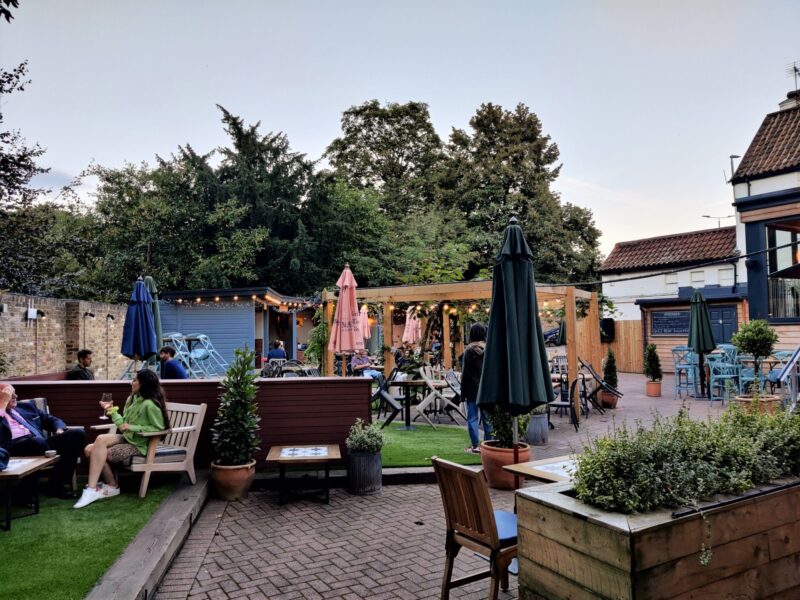
Types of British Pubs Today
British pubs have evolved over the last few decades, as one would expect. There are now different types of pubs across Britain, here are some of the most common types:
Local Pubs – These are the pubs one thinks of when coming to Britain and what keep communities together. These tend to be either privately owned or owned by a brewery. The person in charge of operating the pub is called the landlord or landlady, and they usually have the chance to breathe their own ideas and personality into the way the pub is run, even if it’s owned by a brewery.
Chain pubs – these are pubs that have been bought out or built by some of the large chain companies in the UK. Some of the most notable chains are Wetherspoons, Greene King and Stonegate. How these chains run and market their pubs varies quite significantly across each brand but you will always know when you’re in a Wetherspoons. Wetherspoons pubs are all over Britain and are probably one of the cheapest places to grab a pint and some food, although the atmosphere isn’t always top priority here. Greene King owns many small pubs in London and across the country but can have different menus and aren’t always so obvious.
Gastropub – looks and styles vary for gastropubs. They can look like old, countryside pubs or new, modern city pubs, but their focus is on serving good food. You may find a specific restaurant area within the pub alongside a bar area. Food offerings vary but some will specialise in traditional British food, pies or burgers or some will even specialise in something a little more unusual for a pub such as pizza, tapas or seafood and fish. Gastropubs can be a great place to have all the atmosphere of a pub while getting a good meal.
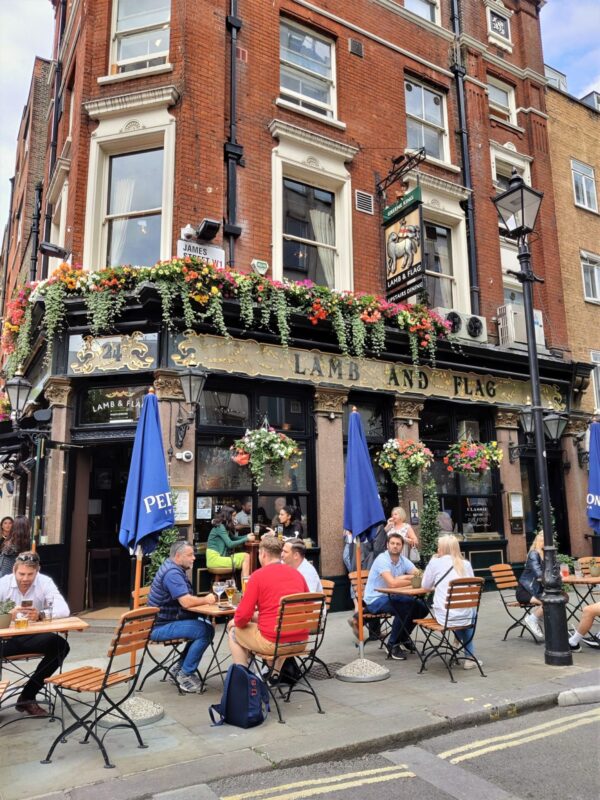

British Pub Names
One of the most interesting things about British pubs is their names. Many pubs across the country are located within old buildings, some centuries old. These older pubs may have been named at a time when many of the country, and the customers, were illiterate, so making a sign, with a picture, for the pub would be recognisable to customers. Signs like these were also used for shops and other establishments across the country. British pubs were often named after a local trade, a location, a historic event or an occupation of the owner. However, many pubs were also named after everyday items such as agricultural equipment or objects. These are the top 10 most common pub names in Britain:
- Red Lion
- The Crown
- Royal Oak
- White Hart
- The Swan
- The Plough
- White Horse
- New Inn
- The Ship
- King’s Head
It is generally customary nowadays to keep a pub name the same, even if it changes owner or undergoes a significant rebranding or refurbishment. This has become a sort of, unwritten rule. Newly built pubs will often follow a similar naming convention to the one used centuries ago.
As well as traditional pub names that are found across Britain, there are a many unusual and unique names. Some of the most unique pub names across Britain are the following:
- The Cat And Custard Pot, Kent
- The Hung Drawn And Quartered, London
- The Swan With Two Necks, Newcastle
- Bunch Of Carrots, Hereford
- The Bull and Spectacles, Staffordshire
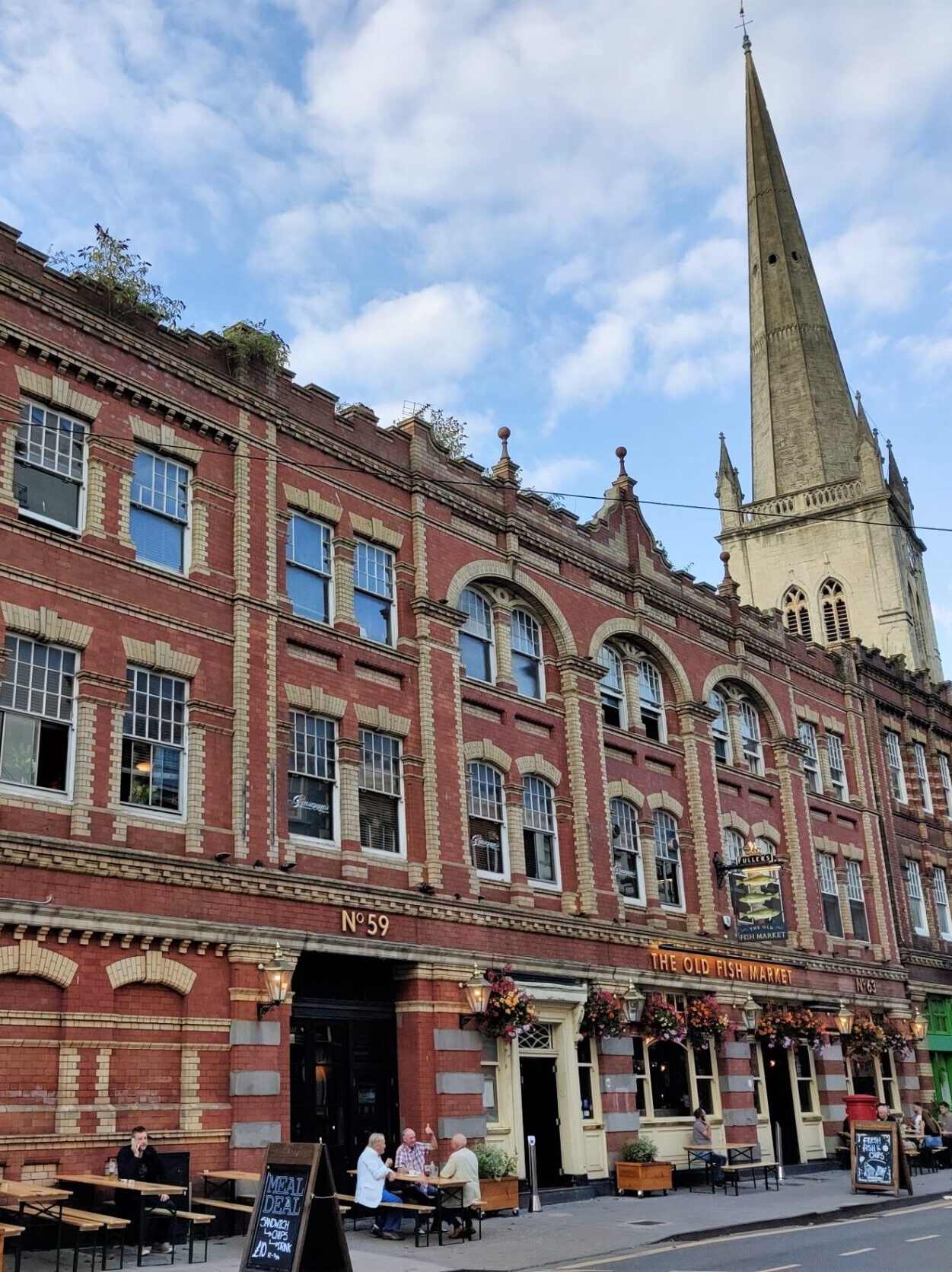
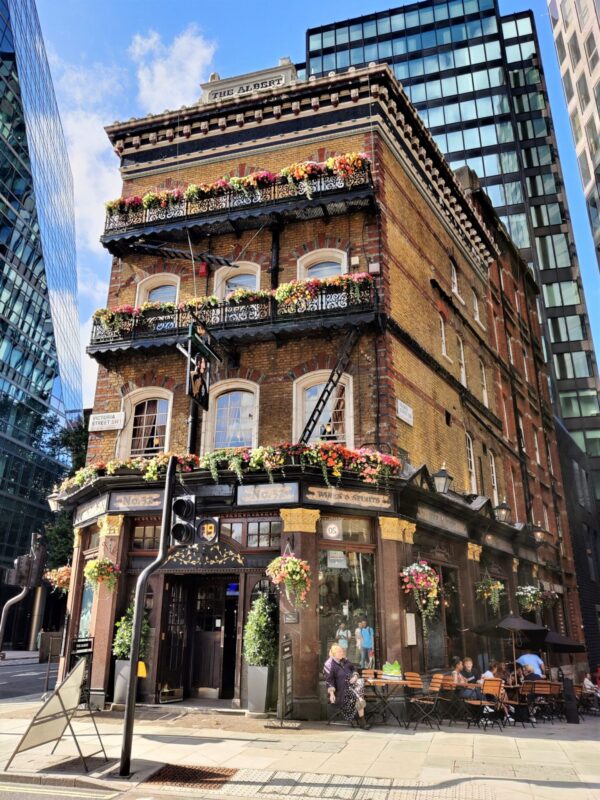
We love exploring the variety of pubs across the UK and it is one of the best things to do while visiting the UK. From spotting unusual pub names, finding the best food and sampling different beers, each pub will take you somewhere new! If you to learn more about UK destinations, check out our collection of UK travel guides and walking tour videos. Let us know in the comments your favourite British pubs.
Pin this article to save it for later or share it with others
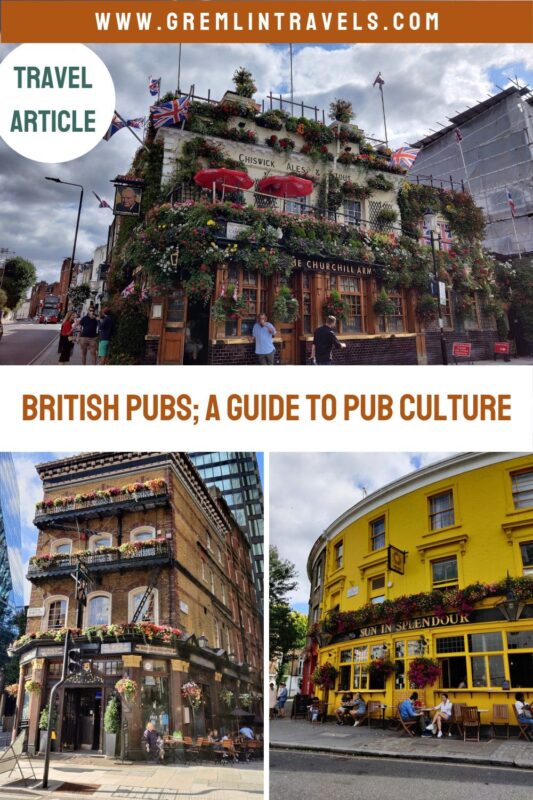


Very nice post! I love visiting pubs when I visit the uk. I also like eating there! Shepherd’s pie is one of my favourite dishes!
Thanks for commenting. Ah yes, Sheperd’s pie is a classic, although a good Steak and Ale pie is definitely one of our favourites!
I miss visiting British pubs! Definitely one of the best parts of British culture!
Thanks for the comment Paige, hopefully you can get to a British pub sometime soon!
It is wonderful that the English have a pub culture as a gathering place for the local community. Football fan violence has greatly tarnished that image.
Thanks for commenting. Yes, it’s a great shame that one of the best and most community driven parts of English culture has been given a bad reputation by the small minority of football fans that cause havoc. But don’t let it put you off, most pubs and people are lovely and welcoming!
As a beer lover, always enjoy a cold beer at a local pub when traveling. I remember many years ago, the amazing historic local pubs throughout the UK. An excellent post and resource for our next visit to London! 🙂
Thanks Robert, we’re happy you enjoyed the post and have found it useful! 🙂
This post makes me want to run out to a pub now!
Thanks for the comment!
How fun. Thanks for sharing.
I’d love to go to the UK.
~Michelle
https://michellescrazybusylife.net